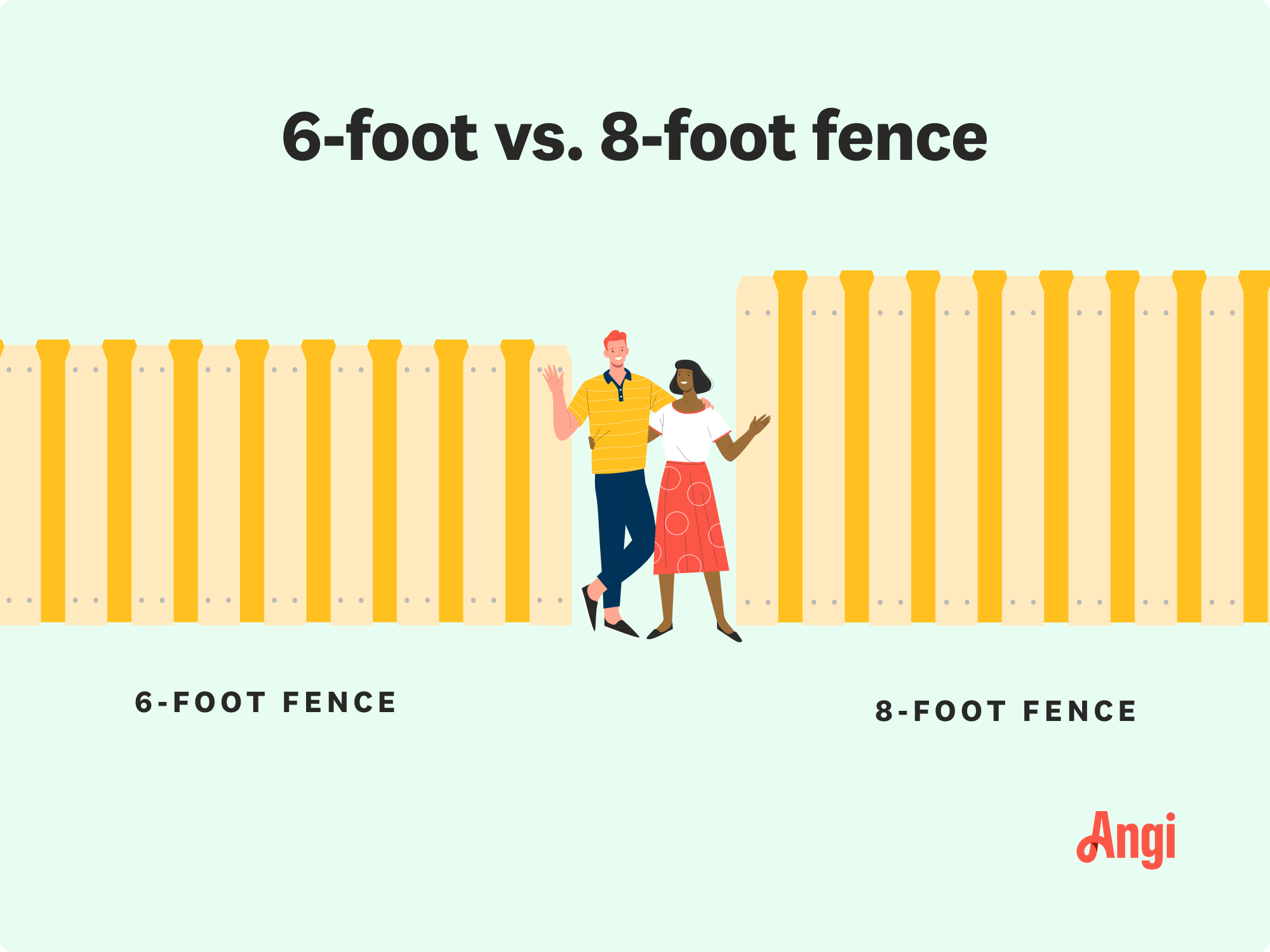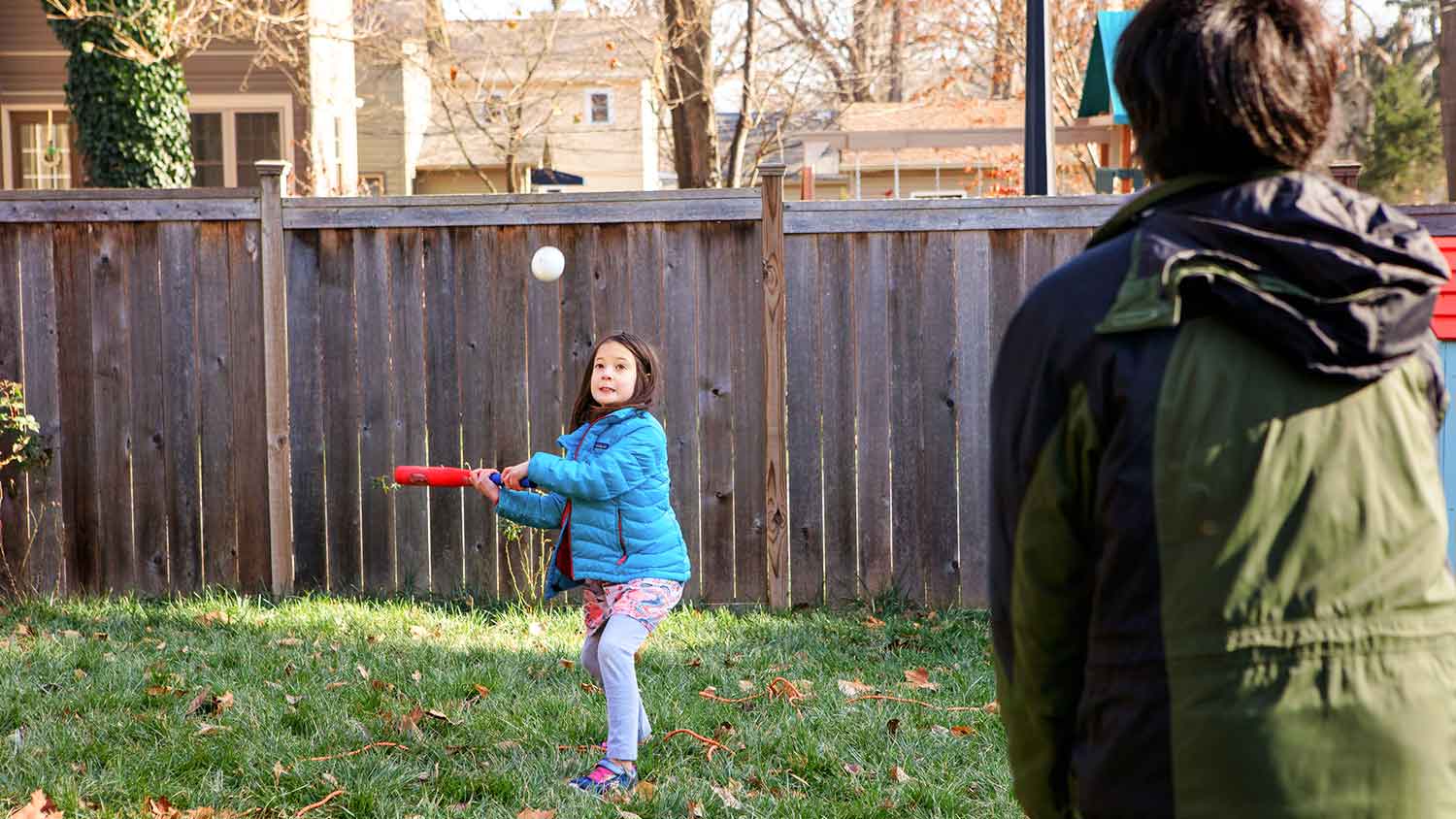How Much Does a Privacy Fence Cost to Install? [2025 Data]
A privacy fence costs $4,300 on average, but can range between $1,800 and $8,000 depending on the length, height, and material of the fence.


The total cost to install a privacy fence is $10 to $50 per linear foot on average.
Corrugated metal is a low-cost option that’s very durable.
You’ll pay a fencing pro $50 an hour or $10 to $15 per linear foot of fence to install a privacy fence.
Privacy fence costs range from $1,800 to $8,000, or between $10 and $50 per linear foot. Most people pay an average of $4,300 on this outdoor project, which can add character and curb appeal to your home. The price will ultimately depend on the type of material, width, and height of your privacy fence.
Cost by Size
Fence installation is priced by linear foot, so the larger your yard, the higher the cost. The fence material also greatly impacts the price, as does the yard layout.
The table below shows the typical cost range for fences across various sizes, from 50 to 300 linear feet, using a range of $10 to $50 per linear foot, fully installed.
| Fence Size (in Linear Foot) | Typical Cost Range |
|---|---|
| 50 | $500–$2,500 |
| 100 | $1,000–$5,000 |
| 150 | $1,500–$7,500 |
| 200 | $2,000–$10,000 |
| 250 | $2,500–$12,500 |
| 300 | $3,000–$15,000 |
Cost by Height
The cost of any fence you install will depend on height. For privacy fences, the two standard heights are 6-foot fences and 8-foot fences. Your HOA or city may have limitations on what size fence you’re allowed to install.

For a 150-linear-foot privacy fence, expect to pay about $4,700 for a 6-foot fence and $6,300 for an eight-foot-tall fence.
Check your local regulations before building a tall fence. Most cities will allow you to build a 6-foot fence, but special permits may be required for fences over 7 feet. A fencing expert will know all of the laws in your area, so consider calling a local pro.
Cost by Material
A privacy fence can add beauty to your property. Wood privacy fences blend with surrounding trees, while metal fences complement a chic, modern vibe.
The table below shows the average privacy fence cost by material for a 150-linear-foot privacy fence.
| Fence Material | Description | Average Cost |
|---|---|---|
| Wood | Lower-cost, less durable | $2,700 |
| Bamboo | Lightweight, little maintenance required, not as long-lasting | $2,800 |
| Vinyl | Little maintenance required, more costly than wood | $3,700 |
| Composite | Long-lasting, wood-like appearance, very costly | $4,200 |
| Corrugated metal | Low-cost, durable | $2,500 |
Note that the cost of a board on board fence for privacy will cost more because they require more materials and more complex installation.
Cost by Location
Where you live can also impact the cost of a privacy fence. If you live in a more urban area or coastal location with a higher cost of living, for instance, expect to spend more on both labor and materials. Rural areas that are more likely to have more acreage will also have higher average privacy fence costs, simply because the average fence in such areas is larger.
The table below shows privacy fence prices in a number of major metro areas across the country.
| Location | Privacy Fence Cost Range |
|---|---|
| Atlanta, Georgia | $1,600–$3,825 |
| Boston, Massachusetts | $2,100–$5,425 |
| Cincinnati, Ohio | $1,575–$3,400 |
| Denver, Colorado | $1,600–$4,000 |
| Houston, Texas | $1,500–$3,750 |
| Los Angeles, California | $1,725–$4,450 |
| New York, New York | $1,900–$4,825 |
| Orlando, Florida | $1,875–$4,150 |
| Kansas City, Missouri | $2,125–$4,900 |
| Seattle, Washington | $2,000–$5,100 |
Additional Privacy Fence Cost Factors
Between labor, height, and add-ons, the cost of a privacy fence can vary quite a bit. You and your neighbor may both put up fences and end up with two drastically different prices.
Labor
When you hire a trusted fencing contractor near you to build a fence, expect about 50% of your overall project costs to cover labor. Generally, fence contractors charge $50 an hour or $10 to $15 per linear foot of fence. Labor makes up a greater percentage of the overall cost when repairing a privacy fence.
Slope
Yard terrain can make fencing installations more complex. Installing a fence on steep slopes or uneven terrain will likely cost more than installing a fence on a flat surface. If the grade is substantial, leveling a yard might be your first step. Regrading or leveling your lawn costs $900 to $3,000.
Permits
Not all fences require a construction permit, but it is always best to check with the laws of your local municipality and your HOA before breaking ground. Cities, densely populated suburbs, and private housing associations typically require permits for fence construction over a certain size or height. The cost of a building permit in this case ranges between $20 and $60, depending on local laws.
Gates
The cost to install a gate on a privacy fence varies considerably. You'll pay anywhere from $200 to upwards of $8,000, depending on materials and design. Manual wood gates in a privacy fence cost an average of $400, while security gates with automatic sensors and smart features can creep up into the thousands. Some contractors will include a basic swinging gate in their initial per-linear-foot estimate, but you will pay more for upgrades such as double doors, keyed locks, and specialized materials.
Painting or Staining
Some fencing materials—like for a wood privacy fence—benefit from paint or stains to prevent rot, warping, and natural wear and tear. The exact cost of painting or staining a fence will vary based on material, preparation requirements, and your location. To avoid surprises, budget an additional $750 to $4,250, or opt for a vinyl privacy fence and skip this step.
Removing Old Fence
If you have an old privacy fence that needs removing, you’ll need to add on an extra $3 to $5 per linear foot. Keep in mind, this surplus amount won’t include additional labor costs.
Removing Trees or Stumps
The cost of tree removal to make way for a fence ranges from $200 and $2,000, depending on their size, species, and proximity to utility lines and structures. Stump grinding prices add about $320. Budget another $25 to $50 per plant if you plan to add new greenery after your fence installation.
Building a Privacy Fence Yourself vs. Hiring a Pro

You'll spend an average of $3,300 if you DIY vs. hiring a local privacy fence installer—a savings of about $10 per linear foot. But hiring a pro guarantees the job is done safely and to your liking.
But if you decide to build a fence as a DIY project, you’ll need certain tools.
| DIY Building Material | Cost of Material |
|---|---|
| Shovel | $10–$20 |
| Post-hole digger | $50–$100 |
| Drill | $100–$250 |
| Circular saw | $100–$250 |
| Sealant | $75–$100 |
Repairing vs. Replacing a Privacy Fence
The cost to repair a fence, privacy or otherwise, is significantly more affordable than replacing one entirely, as you’re only paying for limited materials and labor to make repairs. When replacing a privacy fence, you have to pay for the removal and disposal of the old fence, plus a budget for the cost to install a new fence.
Though the price depends on the extent of the repair work required, homeowners typically spend between $300 and $950 to repair a privacy fence. That’s a significantly lower price tag than what you’ll spend to install a new privacy fence.
That said, if your privacy fence is in need of major repairs due to rotting wood, broken pickets, or damage from a severe storm, it may be smarter to install a new fence. In many cases, you may be able to salvage some fence posts that are in good condition, which can lower your material and labor costs.
How to Save on Privacy Fence Costs
Opting for lower-cost materials is one way to pay less for your privacy fence, but other tips should also be considered.
Clear and level your lawn yourself before the project begins.
Meet with at least three local fence companies to compare prices.
Opt for simple fence features such as a traditional manual gate.
Work around existing trees and major landscape barriers.
Complete the final landscaping yourself after the fence is in place.
Does a Privacy Fence Increase a Home’s Value?
An appraiser typically won’t increase the assessed value of your home simply because you’ve installed a privacy fence, but you might find that it’s much easier to attract potential buyers with a high-quality fence. Home buyers with children and pets will especially appreciate a privacy fence in good condition and may be more likely to make an offer on your house because of the fenced-in yard. Learn more about how a fence might increase home value.
How Angi Gets Its Cost Data
Home is the most important place on earth, which is why Angi has helped more than 150 million homeowners transform their houses into homes they adore. To help homeowners with their next project, Angi provides readers with the most accurate cost data and upholds strict editorial standards. We extensively research project costs to develop the pricing data you see, so you can make the best decisions for you and your home. We rely on reputable sources, including the U.S. Bureau of Labor Statistics, academic journals, market studies, and interviews with industry experts—all to ensure our prices reflect real-world projects.
Want to help us improve our cost data? Send us a recent project quote to [email protected]. Quotes and personal information will not be shared publicly.
Frequently Asked Questions
If you hire a fence installer for the project, the time it takes to build a fence is about 20 to 30 hours. Tackling the project yourself will take around 40 to 50 hours. It can take longer if you need to obtain permits, level the ground, remove the old fence, or remove a tree.
Installing a fence in fall and winter will often save you money. These are the slow times for most fencing companies since fewer people tend to use their backyard during these seasons. Plus, installing a wood fence during the fall allows the wood to season without the heat of the summer sun.
When comparing them side by side, horizontal fences cost more than vertical fences but they do tend to be more durable. Since the majority of fences feature vertical pickets, a horizontal fence offers a more distinct look. On the other hand, horizontal fences may not always make the best privacy fences since the rails could have slight gaps.
It is almost always necessary to hire a land surveyor near you to ensure your fence sits on the right side of the property line. Mistaking the shape of your property can lead to fines and costly changes if you have to move or adjust the privacy fence—not to mention some surly looks from your neighbor. We recommend jumpstarting your fence planning in the spring to ensure there is plenty of time to map out your plan before construction season.
While most homeowners aren't required to tell their neighbors that they’re putting up a fence, it's certainly a good idea to do so. Not only is it considerate to give neighbors a heads up about construction noise, but building a fence may limit your neighbors' access to their own backyards while building is taking place.















